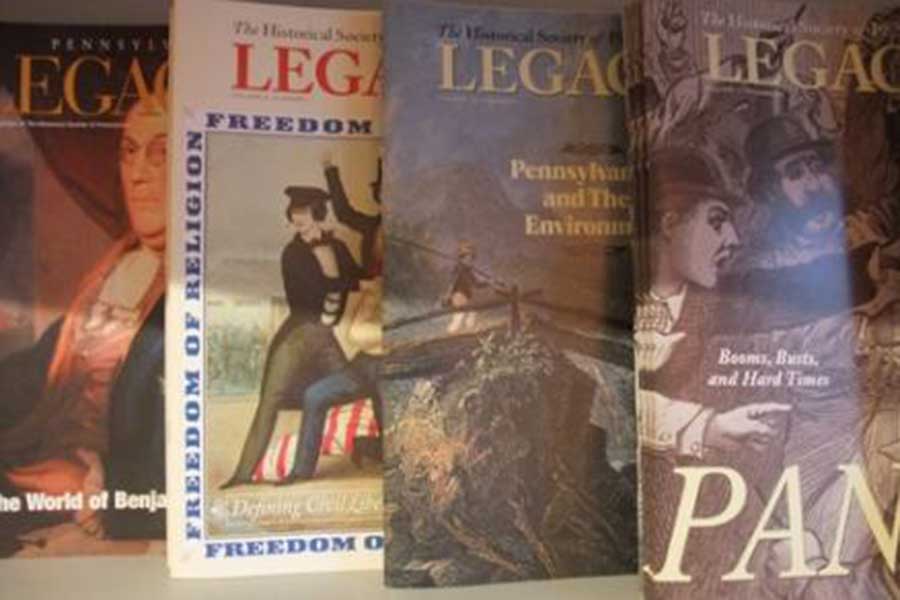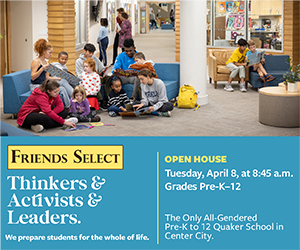Before cracking the spine of the latest gay whodunit, perhaps you ought to add a copy of Pennsylvania Legacies to your summer reading list.
Pennsylvania Legacies, the biannual magazine of the Historical Society of Pennsylvania, recently published a whole issue devoted to LGBT history. The theme is “Pennsylvania Pride: LGBT Histories of the Commonwealth.”
Legacies, which is intended for a general audience, is packed with interesting information. It contains four in-depth articles and six shorter features, including a column by Mark Segal, publisher of PGN, titled, “Building Bridges — and Communities.”
The topics covered run the gamut from the 1700s to today. In “The Queer History of Passing as a Man in Early Pennsylvania,” Amherst College professor Jen Manion discusses the lives of people who would now probably call themselves transgender.
Manion’s earliest example comes from 1752, when Charles Hamilton arrived in Chester. Hamilton hoped to set up shop as a doctor, but his appearance aroused suspicion. He was apprehended by the authorities, who, upon examination, determined that Hamilton was “a Woman in Mens Cloaths,” as the Pennsylvania Gazette reported.
In “Taking It to the Streets,” Dan Royles examines recent history. Royles, who earned a doctorate in history from Temple University, traces the evolution of radical AIDS activism in the region. The earliest responses, from groups like Philadelphia Safeguards and BEBASHI, stressed education and advocacy. By the early 1990s, however, there was a dramatic shift to a militant brand of AIDS activism, as evidenced by ACT UP Philadelphia.
Of course, LGBT history continues to unfold. In 2015, the Supreme Court legalized same-sex marriage. It was also the 50th anniversary of the Annual Reminders, which took place here in Philadelphia. So it was an auspicious time for HSP to publish an issue of Legacies focusing on LGBT history.
“It just seemed like the stars were kind of aligning for all these things to happen around the same time,” said the magazine’s editor, Rachel Moloshok.
Moloshok isn’t just referring to national events, though. HSP recently held a number of programs with LGBT themes. In October 2015, HSP partnered with William Way LBGT Community Center for “Fighting Back: Defending the LGBT Mind and Body in Pennsylvania.”
Throughout the fall and winter, there was also a series of programs related to the papers of Dr. John Fryer, a local psychiatrist who was instrumental in persuading the American Psychiatric Association to declassify homosexuality as a disease. Ain Gordon, an Obie-winning playwright, spent time at HSP as an “embedded artist” and wrote a play based on his research into Fryer’s life. He also contributed a short piece about that to Legacies.
Legacies is also making a bit of history itself. For the first time since the magazine began publishing in 2001, it contains articles about LGBT topics. According to Moloshok, the time was right.
“We were excited to have the opportunity to tackle this because we hadn’t up until now,” she said.
In preparing the issue, there were inevitable omissions. But as the articles make clear, there is no shortage of material to study — if you know what to look for.
That point is highlighted in a piece co-written by Cornelia S. King and Don James McLaughlin called “Schoolgirl Smashes, David-and-Jonathan Relationships, and Champagne Friendships: Mining the Archive for LGBT History.”
According to McLaughlin, a graduate student in Penn’s English department, the article evolved from an exhibit that the two curated for the Library Company of Philadelphia in 2014 called “That’s So Gay: Outing Early America.”
Local archives, McLaughlin explained, are filled with manuscripts, images and ephemera that record LGBT history. That may not be immediately obvious, though, partly because people back then did not use the same words or phrases to refer to the LGBT experience as we do today.
“What Connie and I wanted to do was address the question of how to know you’re looking at LGBT history when you look at materials that are operating with different lexical codes, different euphemisms and different ambiguous ways of conveying that information,” McLaughlin said.
It’s especially important because LGBT lives were often omitted from mainstream historical narratives, or their sexuality was erased.
“One of the greatest struggles of LGBT liberation,” McLaughlin said, “has been to call attention to the fact that we’ve always been here, and that we’re not going anywhere.”
Correcting the historical record is a worthwhile goal, and you don’t need to be a professional historian to do it. In the “Teacher’s Turn” column, Amy Cohen offers tips to teachers who want to introduce LGBT topics in their classrooms. And genealogist Thomas MacEntee provides suggestions on researching LGBT family history.
“What I’d also like people to take away is that LGBT history is deep, and that it’s diverse,” Moloshok said, noting that it encompasses the experiences of women, people of color and poor people. “This is everybody’s history,” she emphasized.
To take a closer look at the “Pennsylvania Pride” issue of Legacies, visit www.hsp.org/LGBTLegacies.

